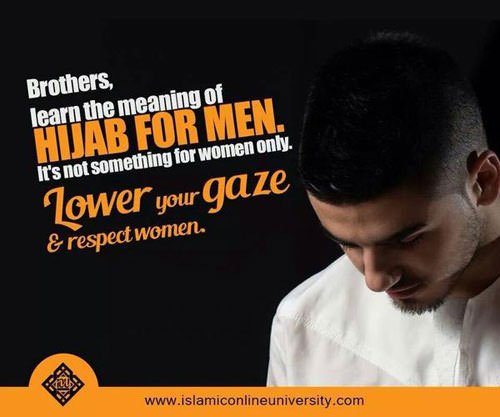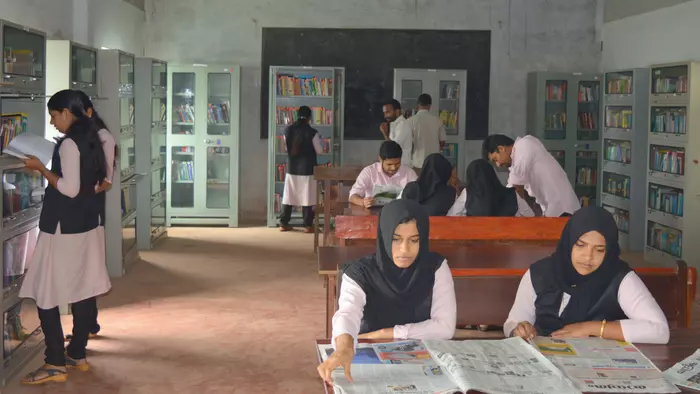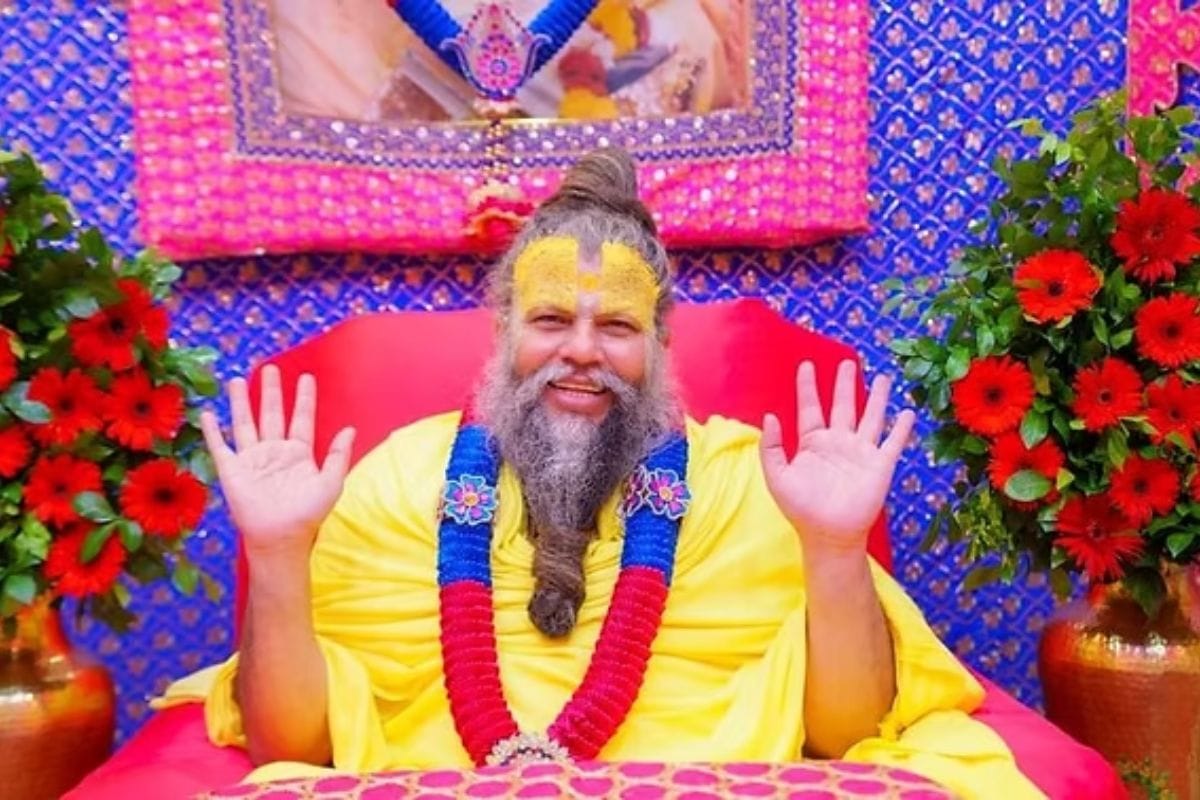Growing up in an Indian Muslim household, one is from a young age made aware of the various codes of conduct one is expected to follow. These codes often bear allegiance to Quranic values and traditions, and guide the behaviour of an individual living in a society. Theoretically, all religious doctrines are to be accepted and respected per se. However, in practice, some of these doctrines become exclusively women centric and start representing the societal norms rather than religious morals. They become inclusive of the norms of the society, which have developed overtime and are largely a tool of rule for the hegemonic crowd. It becomes the case of society determining religion, rather than the other way round. The Islamic concept of Hijab as understood today, is one such example.
Also read: Meeting Societal Expectations Of Right And Wrong With “Hijab”
When I set out to write this piece I sought opinions of different people, both men and women about their views on hijab for men. Interestingly, but not without expectation, more people interpreted this as the understanding of women’s hijab for men, and not the significance that Hijab as a concept, holds for men. The very fact that Hijab has come to be intrinsically associated with women so much so that the word itself brings the picture of a woman wearing a Hijab in our minds, is a clear indication of the popular discourse surrounding it today.
Hijab, as a head-covering, is much talked about in the contemporary world. It has become a much debated topic, particularly on the face of it being banned in some Western countries like France. While many people view the Hijab as a submissive religious dogma, Muslim women round the world have increasingly adopted the Hijab as a symbol of their identity and authority over themselves. For them it is not oppressive, but rather a liberalising force, providing an anti-thesis to Islamophobia. This discourse and debate which exists around the Hijab pertains only to its understanding as a physical connotation, i.e. the head covering. What goes amiss in this dialectic of opinion is the mention of men, and with it the concept of Hijab with its various connotations, as is mentioned in the Quran.
Also read: To Hijab Or Not To Hijab: Should I Follow The Crowd?
Contrary to popular knowledge, Hijab is not just the presence of a headscarf, but has deeper underlying meanings that apply to both men and women. Surah Al-A’raf (7:26-31) addresses the idea of righteousness and piety as more important than the physical covering of the body. “O Children (of) Adam! Verily We have sent down to you clothing, it covers your shame and (as) an adornment. But the clothing (of) [the] righteousness – that (is) best. That (is) from (the) Signs of Allah so that they may remember.”
Hijab is not just the presence of a headscarf, but has deeper underlying meanings that apply to both men and women.
The idea of righteousness and modesty as being more spiritual and less physical is clearly indicated in these lines. The Hijab is a generation of a personal and spiritual space that is away from the materialistic world, and defines the individual’s moral boundaries. The adoption of the Hijab then, in its most basic sense is the adoption of self-restraint against anything that can be considered wicked or sinful (suggestive of the Islamic idea of the Hijab of the eyes discussed ahead). The Hijab is more spiritual than physical, and its understanding as a headscarf is an extremely narrow one. Further, these lines do not make a gender distinction, implying the responsibility of both men and women to exercise morality and restraint in their daily lives.
When referring to the physical aspect of the Hijab, Quran first mentions the men, and later the women. Quoting Surah an-Nur (24:30-31) “Tell the believing men to cast down their looks and guard their private parts; that is purer for them; surely Allah is aware of what they do. And tell the believing women that they cast down their looks and guard their private parts and do not display their ornaments except what appears thereof….“, not only does the Quran refer to men first, but here too, the first type of Hijab it mentions is the Hijab of the eyes. To not invade the personal space of another through staring, glaring or any other way is the first and foremost principle behind the Hijab.
While the Quran vehemently espouses these values of modesty and decency for both men and women, patriarchal societies have selectively filtered the propagation of these doctrines such that the burden of maintaining decency both in the hearth and outside, falls on the female shoulders. When women become the sole guardian of morality, it ultimately results in them not only losing their individuality but also makes them responsible for maintaining chastity, and any transgression then (whether by men or women) is considered an onus on women. Employing this to more general circumstances, it can be linked to the sexist idea of victim blaming, which holds women responsible for inciting men, particularly with sexual urges.
A woman’s non-conformist behavior is not just considered something to criticise but also treated as a justification of crimes against her. A similar deification of women can be seen in other popular religions of the world. This politics of male dominion that reduces the Hijab to being a head covering meant exclusively for women, with no mention of men anywhere in the narrative, plays along with other patriarchal narratives.
The sexist understanding of the Hijab, just like other patriarchal constructs does not just harm women, but puts men in a difficult position too. It not only pitches menfolk as lacking self-control but surrounds them with distrust erupting out of the belief that women are expected to be righteous, but not so much can be said about men. Muslim men are often accused of forcing women to adopt the Hijab (something that is indeed done by sexist mansplainers). Amjad Tarsin, in Hijab- A male perspective, critiques the latter’s double-standard which forces the burden of sanctity on female shoulders while invisibilizing the religious code of modesty for men.
The sexist understanding of the Hijab, just like other patriarchal constructs does not just harm women, but puts men in a difficult position too.
To conclude this brief comprehension of the Hijab with its proper implications, a famous anecdote of Prophet Muhammad and his cousin Al-Fadl bin ‘Abbas can be looked at. While travelling with his cousin, Prophet Mohammed (S.A.W) stopped to give verdicts to the people and answer their queries. A beautiful woman of the Khath’am tribe came to him for some query regarding Hajj. When the Prophet noticed Al-Fadl bin ‘Abbas looking at the woman, being attracted by her beauty, he silently brought his hand backward and directed his cousin’s face in another direction. His choice of making his cousin look away, rather than reprimanding the woman for not hiding her beauty, says a lot about the importance of adopting Hijab of the eyes over that of the body. It further challenges the sexist idea that women can be forced to adopt the Hijab against their will.
Qasim Rashid, quotes the Khalifa of Islam, Mirza Masroor Ahmad to point out the absurdity in the belief that women can be forced to adopt the Hijab by men.
On #MuslimWomensDay I want to post this thread about Hijab in Islam. This is something I hope every guy reads. /1
— Qasim Rashid, Esq. (@MuslimIQ) March 27, 2017
While it would make sense to debate and discuss the concept of Hijab with its proper connotations, origins and cultural significance, the way it is discussed today (simply as a head covering) is a discourse that has erupted out of a patriarchal society. Dress-codes under Islam, both for men and women, are regularly discussed, with different interpretations of the holy text laying different norms, but these discussions are hardly ever facilitated with the more important obligations of spiritual modesty, or their significance for men.
The concept of Hijab in its most popular understandings today has lost its true meaning. It has come to narrowly represent a physical idea for women, where it was meant to be more spiritual for all. It has become a political tool operating on gender politics within Islam, and socio-cultural politics within the world. Very few people are aware of the personal connotations that the Hijab holds. It is not simply a case of mis-interpretation, but rather that of selective overlooking of facts and doctrines over time, to make the religion better suited for a patriarchal society.
Featured Image Credit: Islamic Online University
This article was updated on June 21, 2017.
About the author(s)
Aqsa writes on the intersections of identity and society, exploring how these layers shape people’s lives and perspectives. With a background in literature and cultural studies, her work reflects a belief that stories can create space for empathy and new ways of seeing. Outside of writing, she enjoys reading and gaming, always chasing stories in one form or another.





